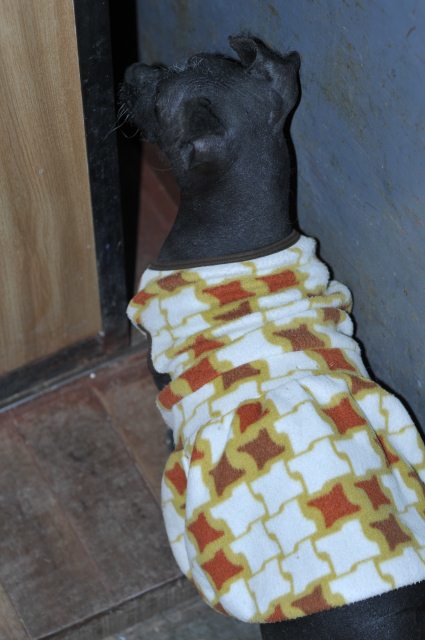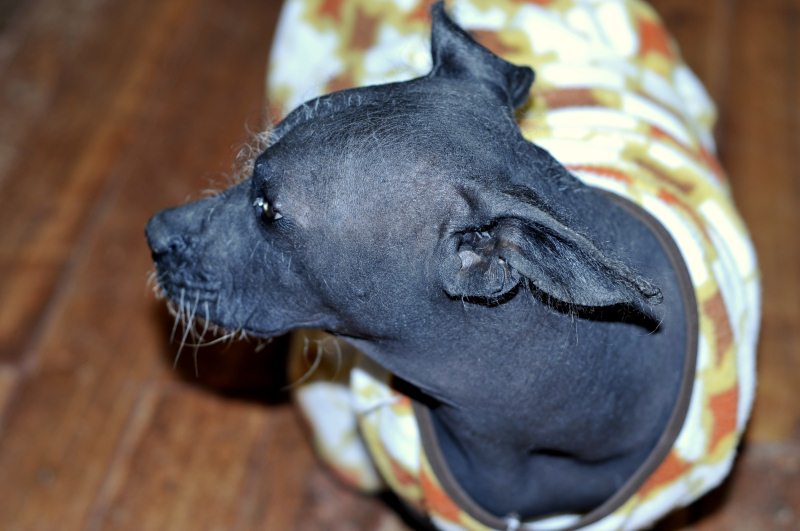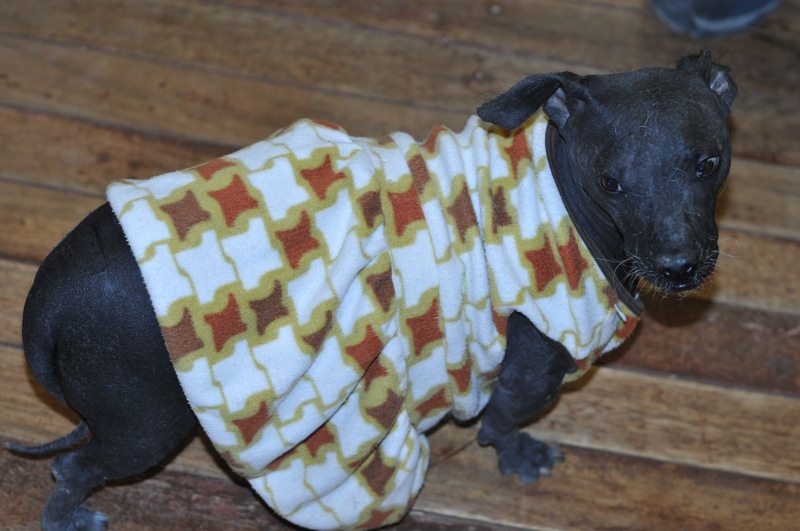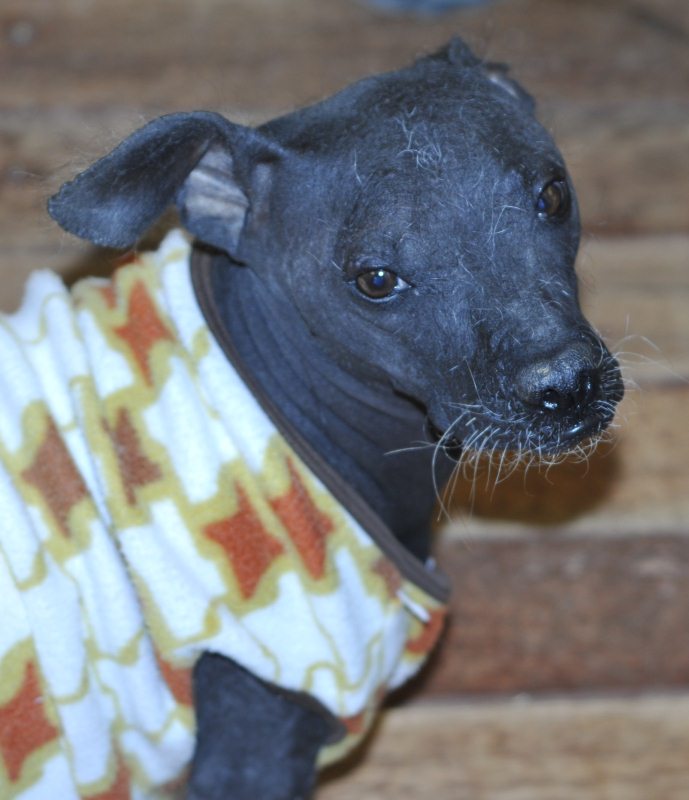Hairless Lady

|
Peruvian Hairless Dog
The last stop on our Cuzco
City Tour was to visit a shop to feel quality wools, I saw
this little girl as she disappeared, recognised the breed and her owner
said I could photograph her
The Peruvian Hairless
Dog is a breed of dog with its origins in Peruvian pre-Inca
cultures. It is one of several breeds of hairless
dog not to be confused with the Xoloitzcuintli. Appearance: According to the FCI breed standard, the most important aspect of
its appearance is its hairlessness, there’s a surprise. The dog may have short
hair on top of its head, on its feet and on the tip of its tail. In Peru,
breeders tend to prefer completely hairless dogs. The colour of the skin can be
chocolate-brown, elephant grey, copper or mottled. They can be totally one
colour or one colour with a pink spotted tongue. Albinism is not allowed. The eye colour is linked to the skin colour. It is
always brown, but light coloured dogs can have clearer eyes than darker-skinned
dogs. Peruvian Hairless Dogs vary in size:
Weight is also varied according to size:
The dogs should be slim and elegant, with the impression of force and
harmony, without being coarse. The ears should be candle-flame shaped and erect
with the possibility to lay flat. Proportions of height (at withers) to length (withers to base of tail) are one to
one. Temperament: Peruvian Hairless dogs are affectionate with family but wary of
strangers. They are typically lively, alert and friendly with other dogs but can
be protective as well. They are agile and fast. These dogs do not like to be
alone, but when trained do well. These dogs are intolerant of extreme
temperatures. They generally require an owner that understands them and are not
recommended for beginners. Care: The lack of hair leads to a reputation for being clean, for being easy to wash with a sponge and for a natural lack of fleas or other parasites. Despite this, the dog needs care, the skin should be washed from time to time to remove dirt and prevent clogging of pores. Baby cleaners are a good choice provided that they do not contain lanolin. Some dogs are prone to have acne or at least blackheads. The skin sometimes becomes too dry and moisturizing cream used. Protection against sunlight is necessary on lightly coloured or white dogs, sun-block use to prevent sunburn. Protection against cold may vary from dog to dog. Smaller dogs seem to be more sensitive to the cold than their larger counterparts. We have now seen several all wearing jackets. The rims of the ears sometimes need special attention as they can become dry and cracked.
Genetics and health: The genes that cause hairlessness also result in the breed often
having fewer teeth than other breeds, mostly lacking molars and premolars. Some are born with more dentition than others. One
theory is that the hairlessness trait is recessive-lethal, which means that
homozygotic hairlessness doesn't exist. This results in an average birthrate of
two to one, hairless to coated. According to Hans Räber "Enzyklopädie der
Rassehunde" 25% of the population is born coated. While they are recognised by the American Kennel Club (AKC) for its Foundation Stock Service as Peruvian Orchid dogs, they cannot be shown at AKC shows, they can be registered with FCI, UKC, NKC, APRI and ACR. Some breeders think that interbreeding with coated (Peruvian) dogs is required to maintain functional teeth and nervous system health in subsequent generations. They say that breeding of hairless with hairless (and common but unacknowledged culling of hairy pups from litters to maintain a "pure" image) leads to short-lived dogs with serious health problems. However, other breeders (especially in Peru) think the opposite and are doing well - for centuries already. Breeding hairless to hairless increases the chance of congenital defects in litters. Like all breeds there are some health problems. These include IBD, seizures, stroke and skin lesions. They are very sensitive to toxins and care should be taken in use of insecticides.
History: This an ancient breed. Although it is often perceived to be an
Incan dog because it is known to have been kept during the Inca Empire,
they were also kept as pets in pre-Inca cultures from the Peruvian coastal zone.
Ceramic hairless dogs from the Chimú, Moche, and Vicus cultures are well known. Depictions of Peruvian hairless dogs appear
around 750 A.D. on Moche ceramic vessels and continue in later Andean ceramic traditions. The
main area of the Inca Empire (the mountains) is too cold for the natural
existence of the dogs. The Spanish conquest of Peru nearly caused the extinction
of the breed. The dogs survived in rural areas, where the people believed that
they held a mystical value. Miscellaneous: It is a persistent myth that the body temperature of hairless dogs is higher than other dogs. They may feel warmer due to the lack of hair. According to Peruvian folklore, letting the dog "hug" you is believed to help with stomach pain and other disorders. Other myths claim that the dog is a vegetarian or that it cannot bark. It is very likely that some of these myths have helped the breed to survive for so long in Peru.
This little girl was a year and a half old, just about to have babies and we wish her well.
ALL IN ALL GLAD TO HAVE MET ONE BUT NOT KEEN TO OWN ONE |



